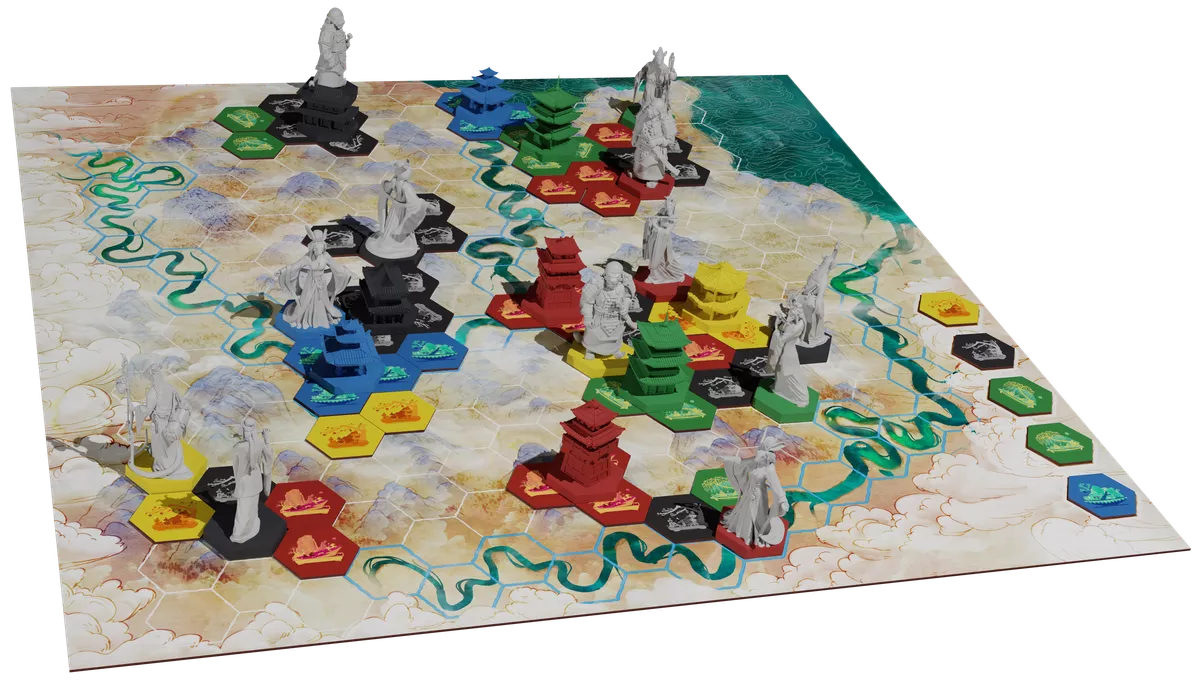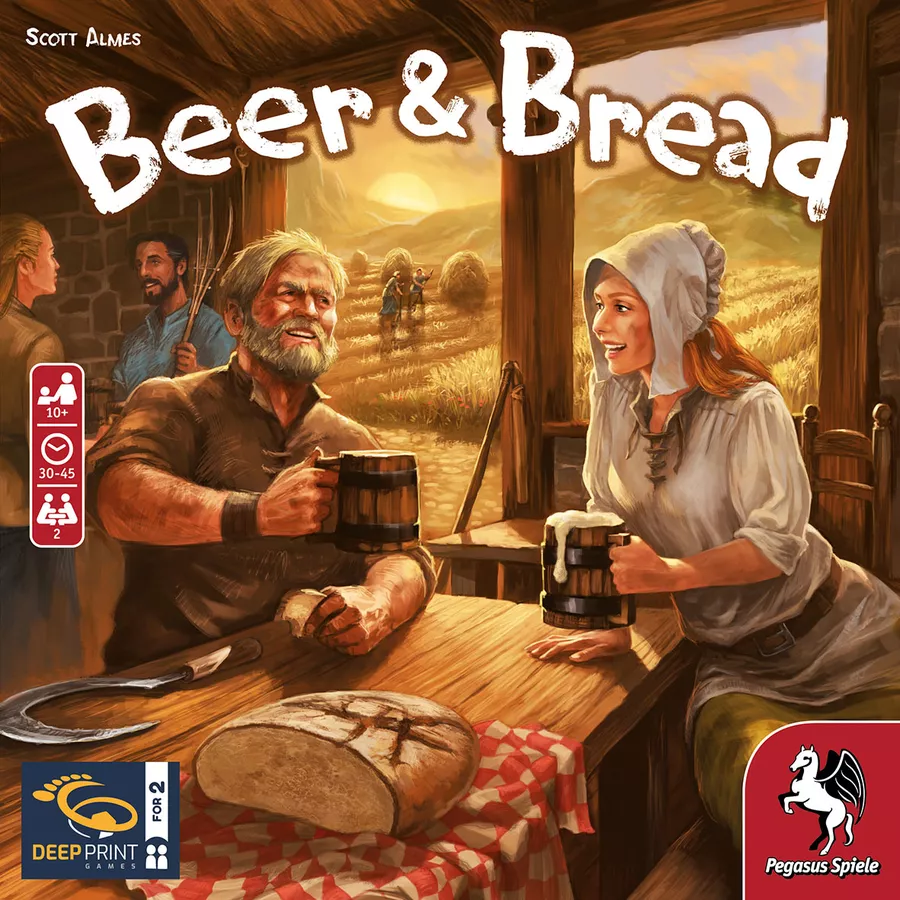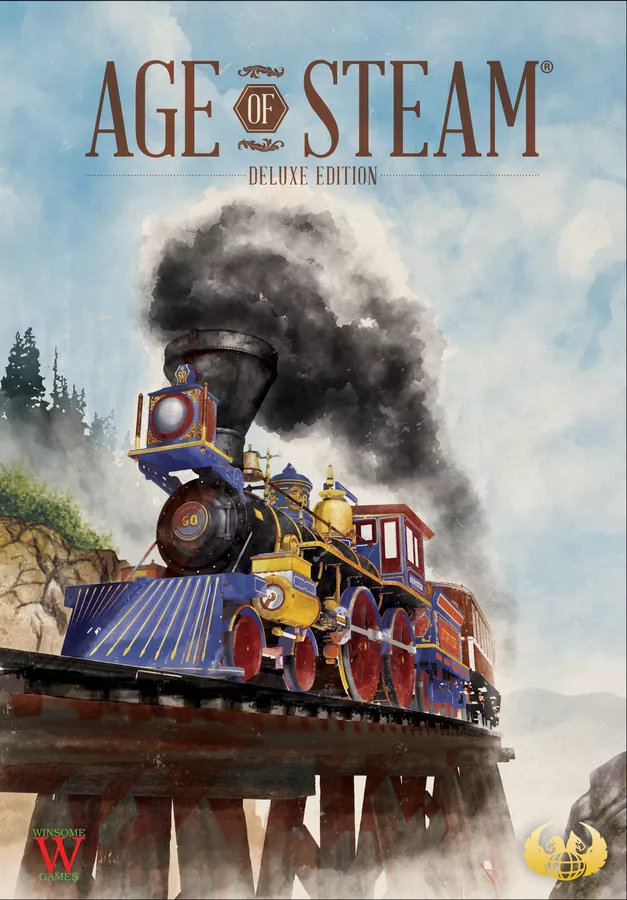
I hit a mental brick wall writing my next piece for the site. Turns out, I’ve honestly just hit a wall with board gaming in general. I’m not so much “burnt out” from the hobby: I still play some solo and two player games in The Meat Space, and I play some BGA nearly every day. Honestly, it’s more that I’m burnt out on the market and the media.
The games and re-releases that are coming out are simply exhausting for me anymore. Kickstarters are becoming larger, more expensive, and worse games. Worse not so much in a “the game is flawed from the start”, but that the content being thrown in at the last second is either crucial to the game’s success and will become inaccessible after the Kickstarter, or underdeveloped to the point of being unplayable. Even worse, old classics with crisp, readable, simple designs are being re-released with ugly, unclear art and worse components for more money, leading to actual classics drifting to time as no one wants to play the illegible version.

How did a picture of HUANG get in here? Weird.
All that is tough enough to sift through, but it gets worse if you listen to board game podcasts or YouTube channels. I don’t want to call anyone out in particular, because it is quite common to fall in one of the two following camps: either you’re the heavy complainer that loves one new game a year, or you’re the shill for the new $500 Kickstarters so you don’t have to pay for them yourself. I understand the frustration, but as an optimist (to a damn fault) it is unbearable to hear the same archetype of person complain over and over again about the same thing week after week for “content”. Or worse, try to sell me on Ether’s Crisis: The Beginning of the End launching on Kickstarter in July for $700 (but it’s good on its own, not because we were given a copy. Promise.)
It’s really a shame to me that us board game geeks are so… UNFUN most of the time. We all need to take a breath. Me included! Look at my previous writings! Look at what I just wrote!!
So I’m bucking the trend this week. This isn’t some examination of a larger trend in the hobby, or a deep dive into personal struggles (well…). I’m just going to rave about three friggin’ amazing games that you can order right now (or very soon) that you should get excited about. Those that, regardless of where they came from or who designed them, are simply fantastic times. They may not Stand the Test of Time, but they’re awesome now, and wow is that what I, and so many others, need.
MILLE FIORI

Dr. Boardgaming, aka Reiner Knizia, designs a new game every 37 seconds. Mille Fiori is his cornerstone 2021 release that is just now being released and distributed stateside. It feels quite alien to me: how did this game just come out? It harkens back to late ’90s Knizia’s and, somehow, Feld’s Trajan. There’s no real theme to discuss, and I’m sure in ten years you’ll have five other rethemes to choose from, so if theme is important, sorry! This is about as themeless as it comes.
The game is played over a series of rounds where each player is going to be drafting one card from a hand of cards, playing it, and then the next player plays their card they chose. Once everyone does that once, the hands are rotated and the process repeats. What will happen with these cards is each player will be placing one of their markers inside of the city on the game board, a city that’s broken up into different sections. Each section scores differently, but each section has some area-majority component to drive you to be invested in each district of a city: first to do a given task will receive a large dump of points.
But that’s the game. I could talk about the scoring in detail, but I think it’s apparent how this game can be so engaging. You want to draft every card, be in every spot, but you can’t. There’s such a tension between what’s best for you and what’s best for your opponent to not get. The juiciest part of all of this is the tough decisions and “positive frustration” begin almost immediately: “If I go here, I don’t want Tim to leech because I’m giving him the best card for him to leech. But if I don’t go, then Tim and Sarah will be in the same tango. Can I afford to miss that dance?”
I don’t want to minimize the enjoyment of the game by simply comparing it, but it’s impossible to understand what it’s like by looking at it. If you combined the area-majority of Samurai and made every area you control score differently, you’d have Mille Fiori. Again, does this reinvent the wheel? Do anything extra wild? No, probably not. Is it a tight design that’s easy to teach? Absolutely. Hell, it even brings in the design philosophy of the late ’90s by including the scoring and some rules on the cards. What a (depressingly) novel concept.
If you are a fan of Knizia, new to his oeuvre, or simply looking for a small brain burn with great player interaction, don’t sleep on Mille Fiori. Also, it’s like $40 on most sites. An impossible price to top in this day and age.
BEER & BREAD

Scott Almes and I have never seen eye-to-eye. I think some of the Tiny Epic games are ok but certainly not worth me owning or suggesting to play. Claim is fragile, but when it works it can be quite fun. His Button Shy games are fine. Honestly the only one of his games I can confidently say I enjoy is So, You’ve Been Eaten, which I still don’t even want to spend the money on to own myself, even though my play was quite fun.
Then came Beer & Bread.
Here’s the shortest pitch I can give you for the game: What if a small box Uwe Rosenberg game had the victory condition of Tigris & Euphrates?
In Beer & Bread, players are going to be making beer and bread. Wow! When you make a loaf of bread or keg of beer, you will be awarded a certain amount of points. At the end of the game, your final score is whichever of those categories you score the lowest in. If you had 500 points of beer, and 1 point of bread, congratulations, your final score is 1. I love this so much!
Especially when you pair this with the rest of the game. Each player will have a hand of cards, and each card has three different uses. The first is the recipes to make the beer or the bread. The second is resources you can gain from the general supply. The final is a possible upgrade. This is why the victory points being based on your weakest category is so great: it is very easy to make an unbelievably broken engine for one of the recipe types. However, the game is too short to make two broken engines, so you must focus on two strong engines over one wicked powerful one.
There’s some other loose ends to talk about with the game. The first is that resources only come out at certain times, in certain frequencies to the available supply, meaning that if my partner takes all the wheat, then I have no wheat to take until next year. The second is the differences between the rounds. The rounds in this game alternate between fertile and drought years, each type functioning differently from one another. This is what impacts the number of resources allocated to the players each round, amongst other things. Finally, the graphic design is honestly some of the best I’ve seen in years. You can only store 9 resources, and you store them in your storehouse. But! You’re not throwing them into some generic space: you’re throwing them onto the grid on the roof! How cool is that?!
If you and your partner/spouse/best friend love farming games, and love tight competition that can be done within an hour, Beer & Bread is the game for you. It’s been such a hit for me that I don’t see myself playing Targi, 7 Wonders: Duel, or Patchwork over it any time soon. This has easily become my default two-player game, and for $25-$30 I think you should check it out too.
YOUR FAVORITE GAME

The coverage of Brass: Birmingham reaching #1 on the overall board game ranking on BoardGameGeek has been unrelenting. David’s piece on it here helped add some historical context to the entire situation, but most pieces seem to be about if the game is “good”, or “better than” Gloomhaven, the usurped title, both entirely fruitless endeavors because of, y’know, subjectivity.
At the end of the day, none of this matters. Who cares. That ranking on BGG is a useful tool for people to start exploring the board game space from, not some holy gospel signed by some higher being.
All of the drama around Brass: Birmingham, Zoo Vadis/Quo Vadis?, etc. is what got me in this mood, and I want everyone to hear my plea: go play your favorite game.
Undoubtedly, my favorite board game is Age of Steam. I have talked about it before, mostly in my article recapping Age of Steam Con. What matters most is the sheer amount of true enjoyment that I get from playing it. When I’m in a game of Age of Steam, I don’t think about any other games. I don’t think about the real world. It’s one of the truest forms of escapism I have left.
Part of the reason it brings me so much joy is exactly how many emotions I can gain from the game, in the exact way I want to. The frustration of making a mistake; the feeling of being an absolute genius when a complex move is pulled off; and the giggliness felt when cutting off people’s routes (or having my own route cut off!).
It’s when I play games like this that I remember why I’m here in the first place. All of the negativity around the hobby simply washes away. This renewed focus on playing my favorite games is why I was recently able to cull another 100+ titles: I want to look over at my shelf and say “wow, I want to play that game!” and have no negativity associated with any title.
Of course, games like 1830: Railways & Robber Barons and Twilight Imperium: Fourth Edition aren’t going to get played every week. I’ll never get to play Power Grid with my partner, as they are terrified of basic arithmetic. But none of that matters. Restrictive games are not bad games, it’s just that they need to have the right audiences. As another example, Caylus currently falls into a weird place in the market by being a quite cruel, confrontational Euro game. For most groups, this would never get played, and yet I keep my copy because, frankly, it rules.
This is all a lot of preamble and rambling, but my point is simple: go play a game you love. Online, in person, doesn’t matter. Don’t take this time to learn a new game! Go play an old favorite. Drive to your grandma’s house to play Rummikub. Grab your partner and play the first game y’all played together. Call up some college friends and play Catan or Agricola like you did in 2012.
Find, and cherish, the love for the hobby. Don’t fall prey to the “listicles” and the advertisements. Don’t listen to anyone but yourself.
Cause if you’re not careful, you’ll care which game is #1 on BGG.
Comments
No comments yet! Be the first!